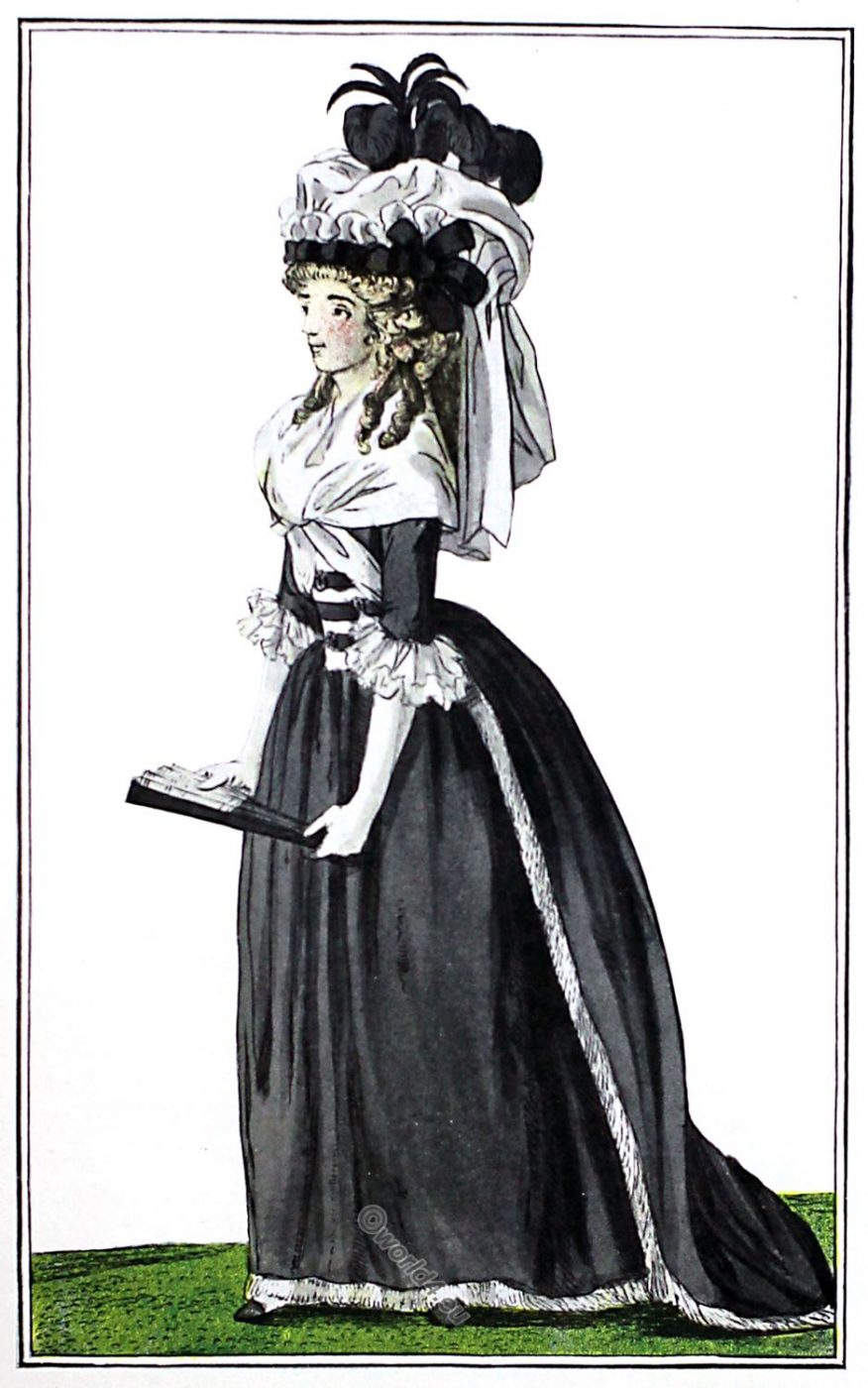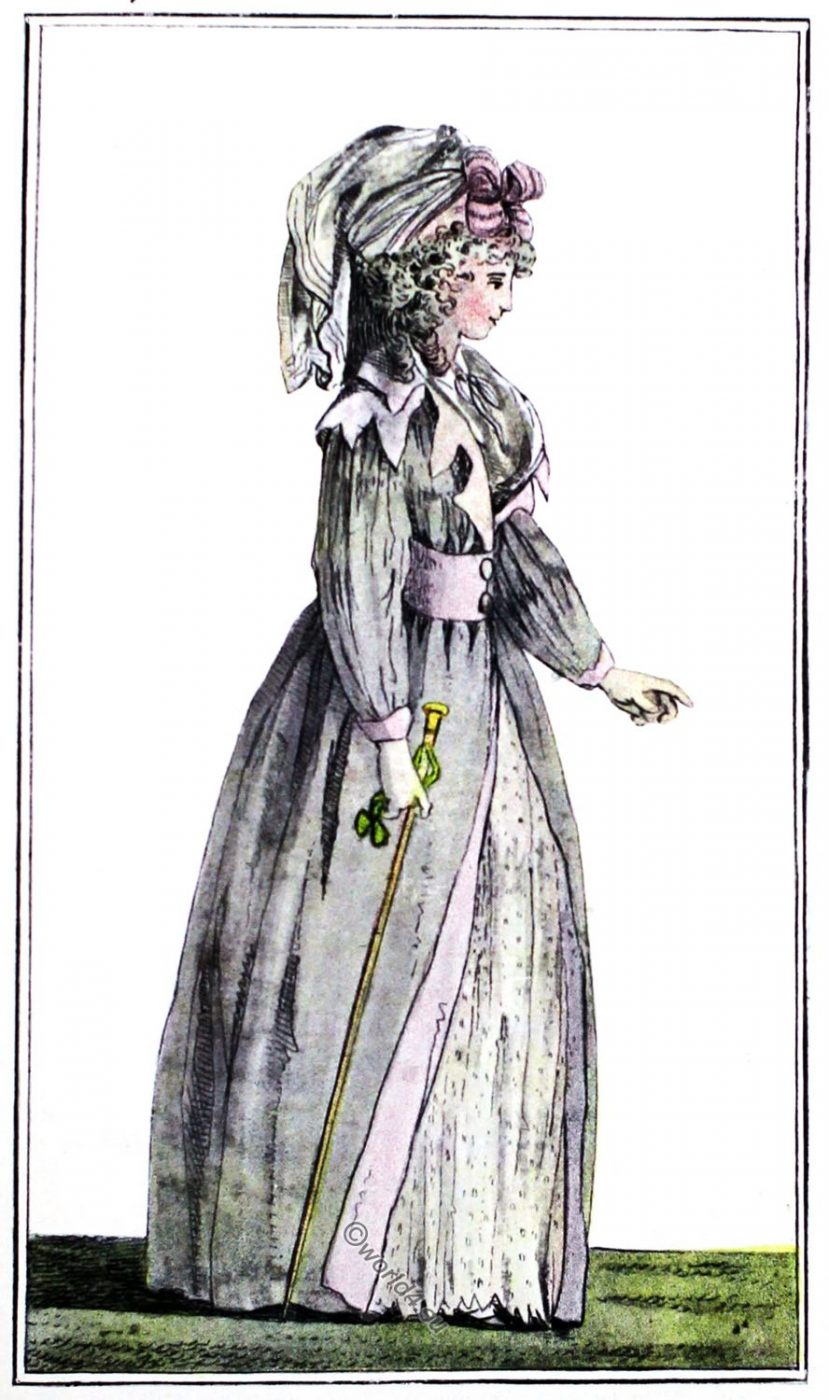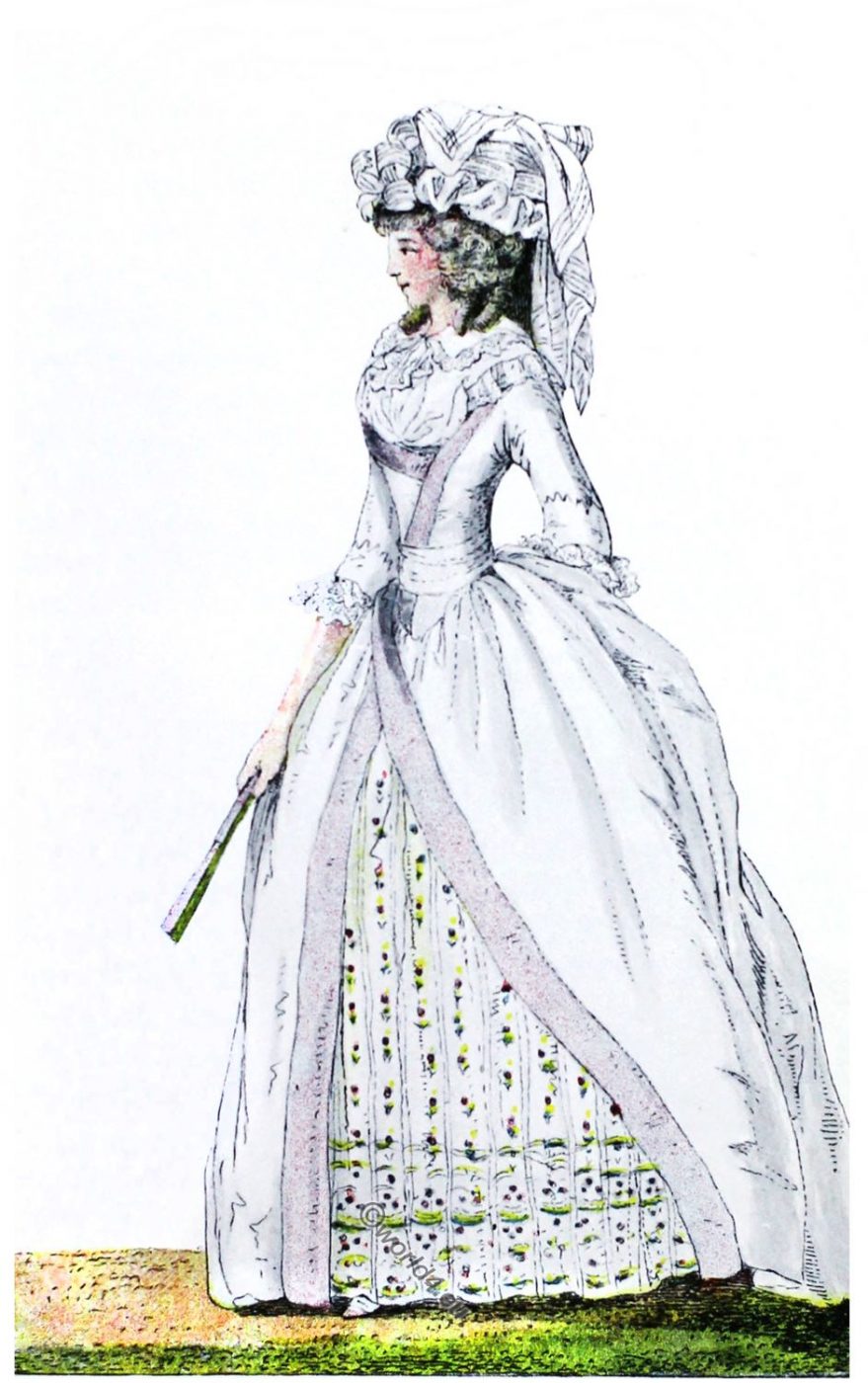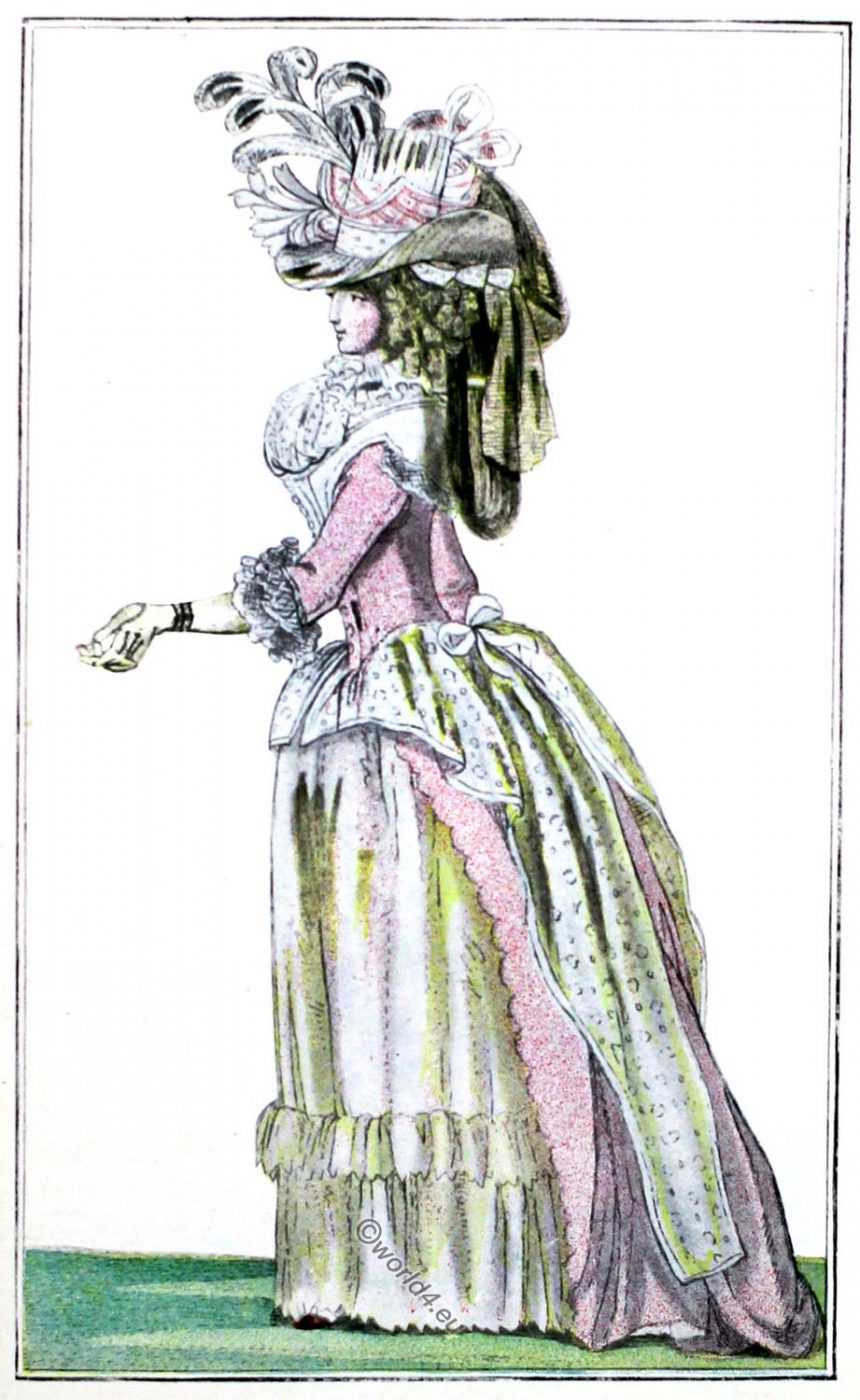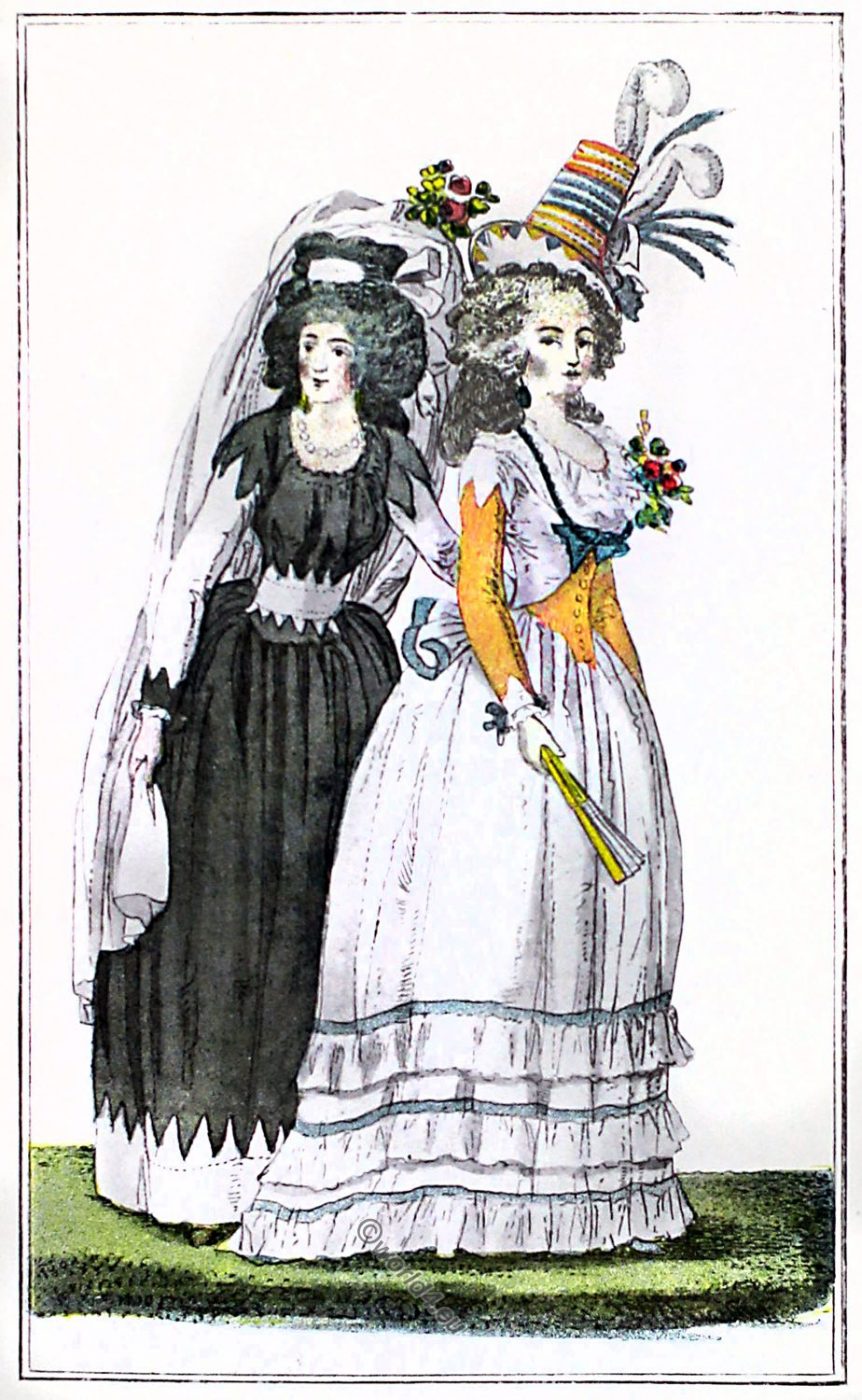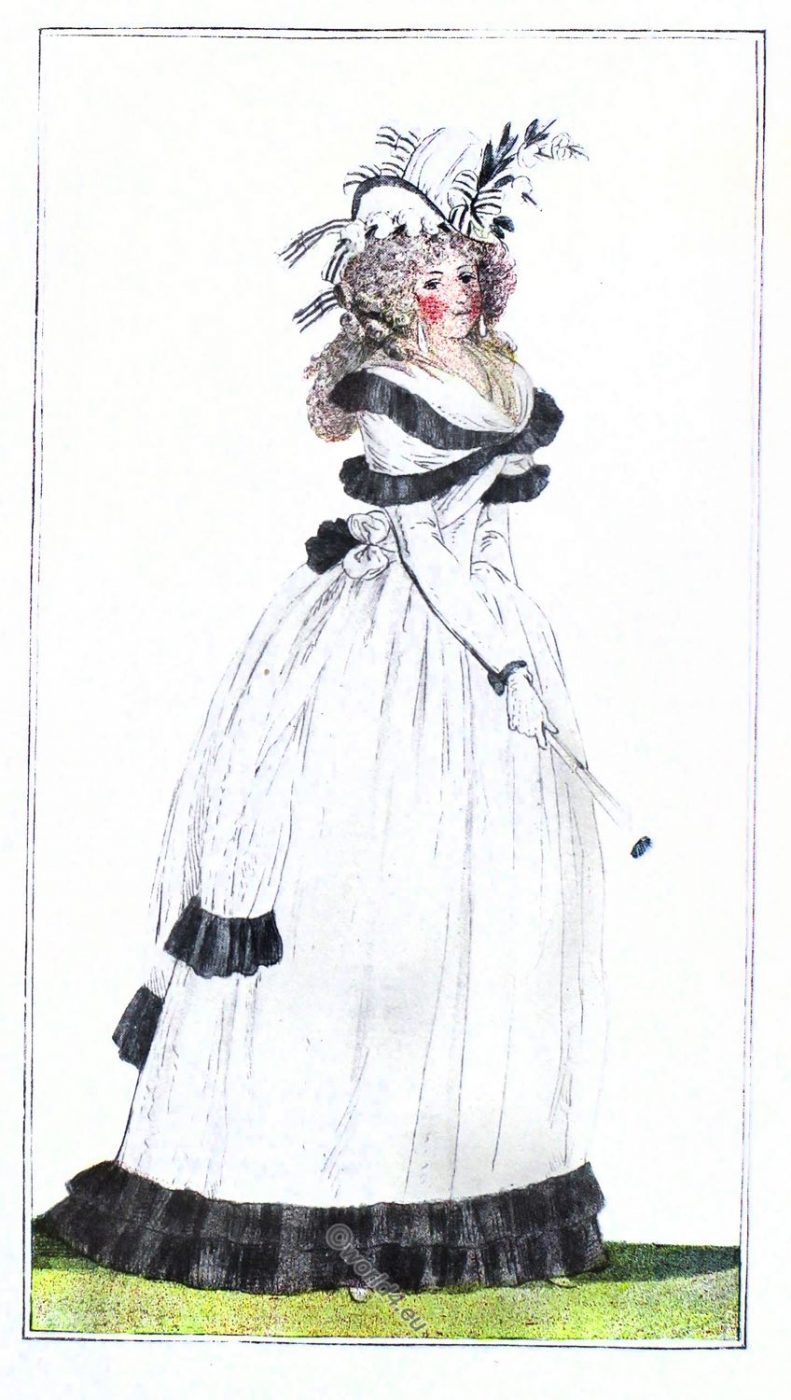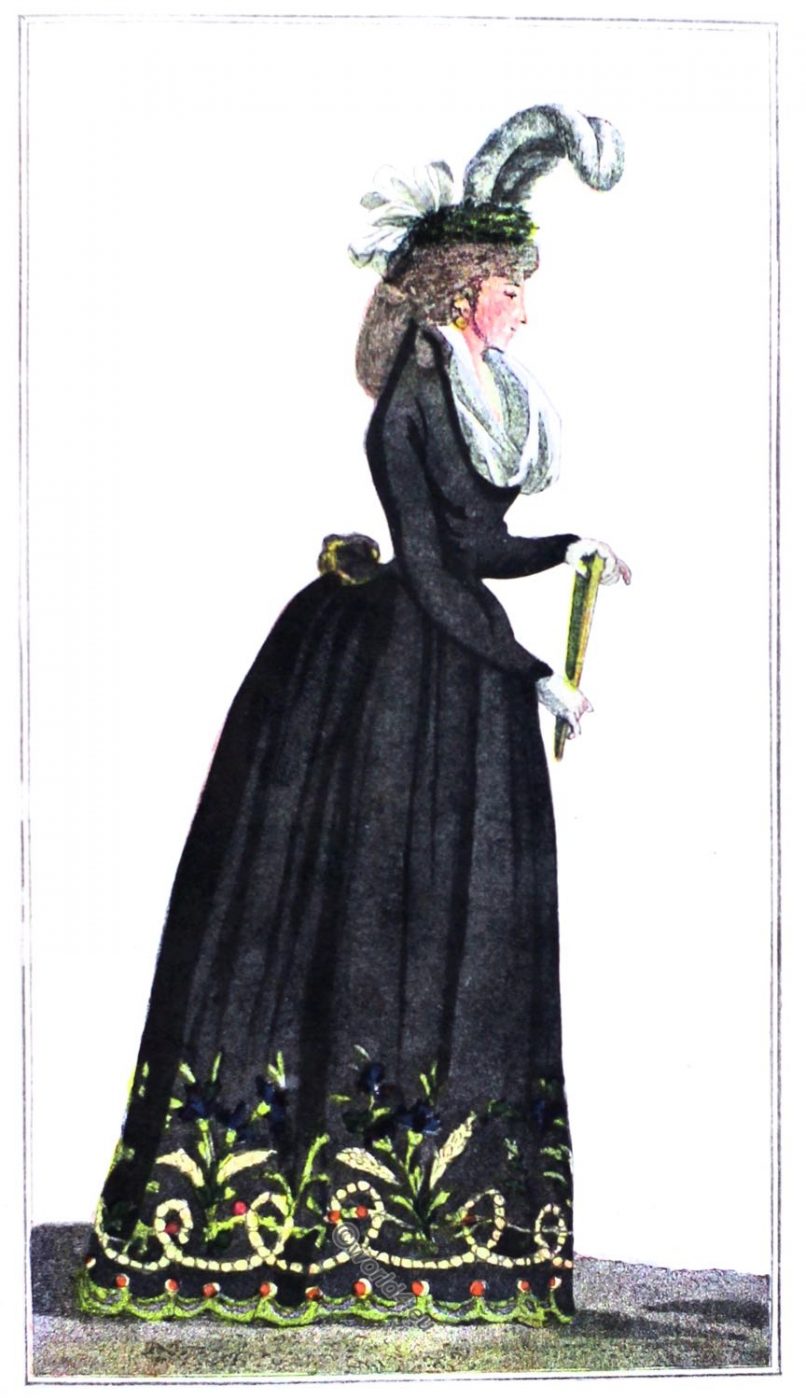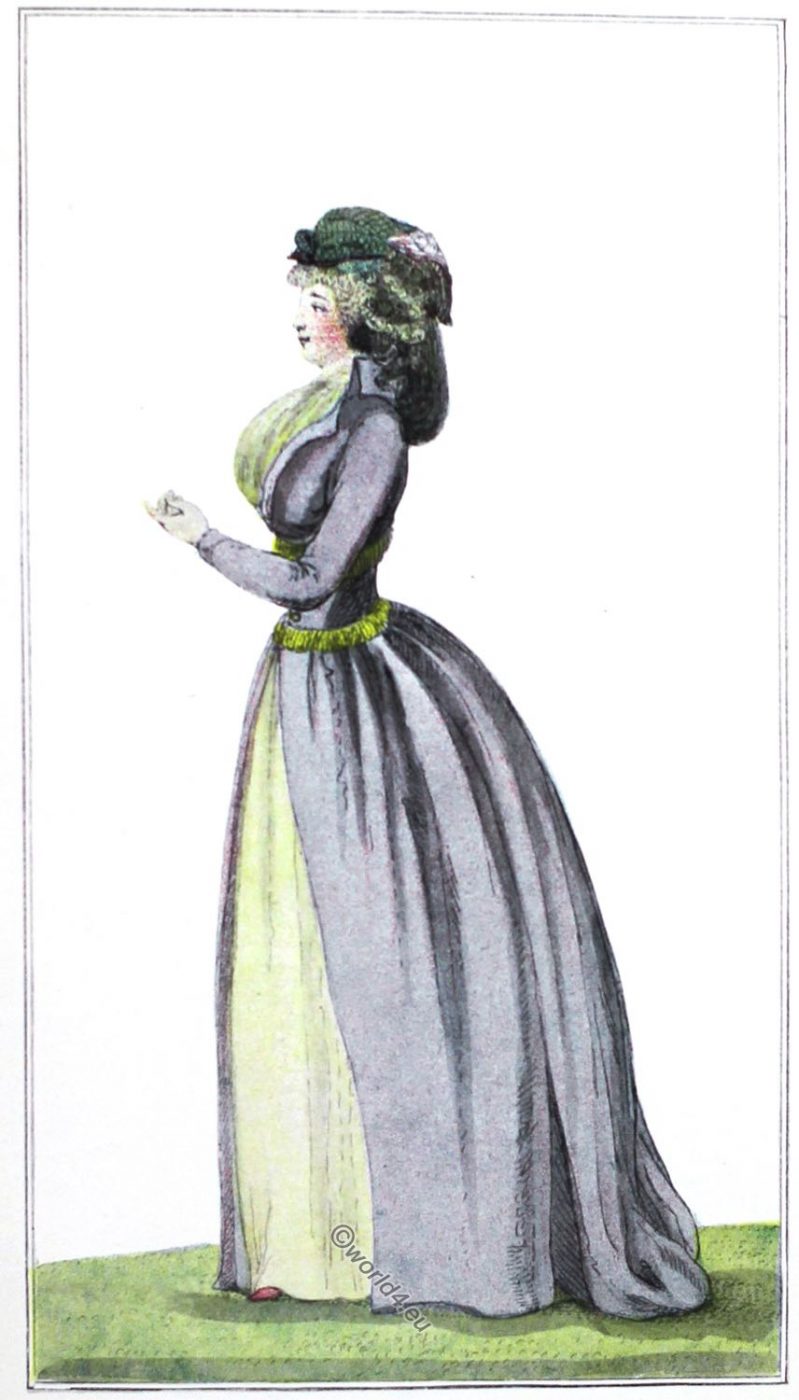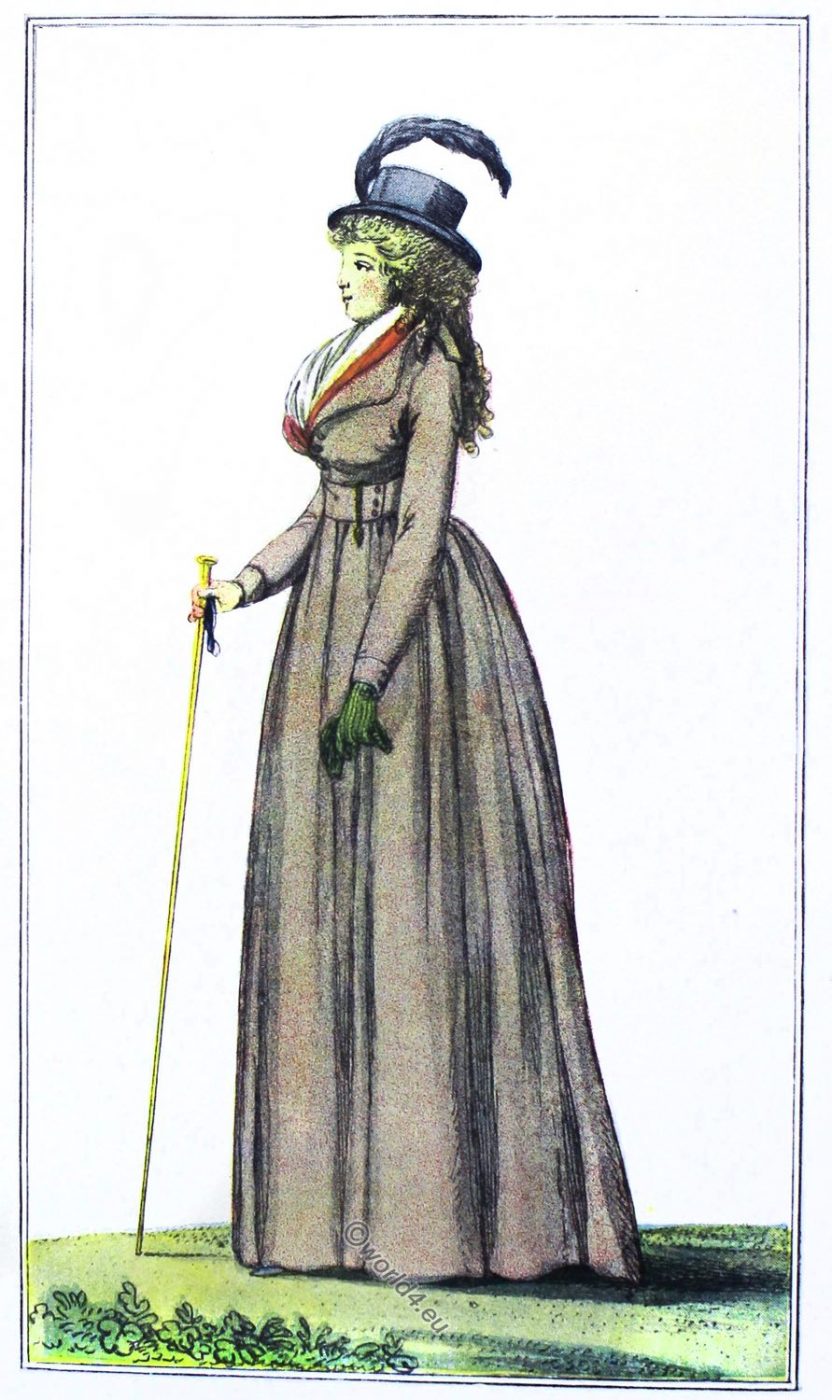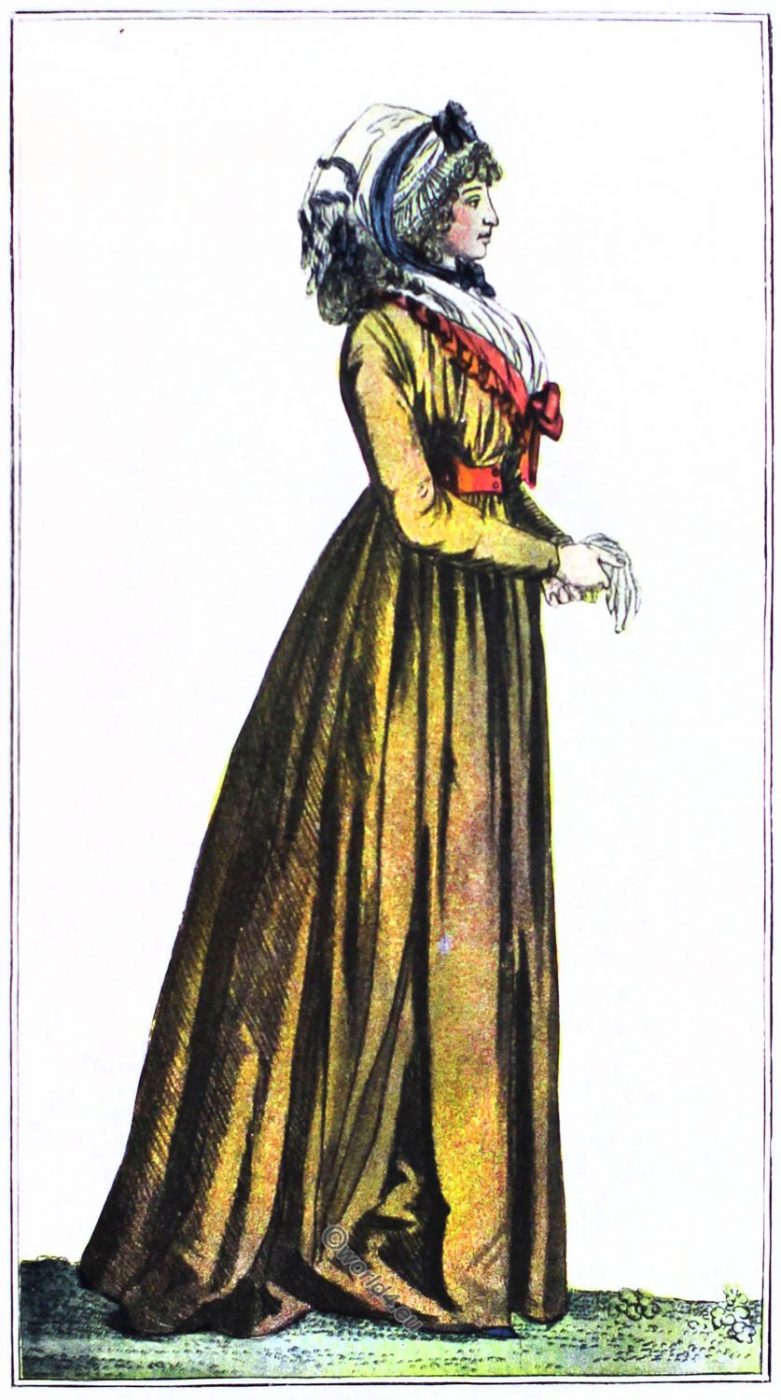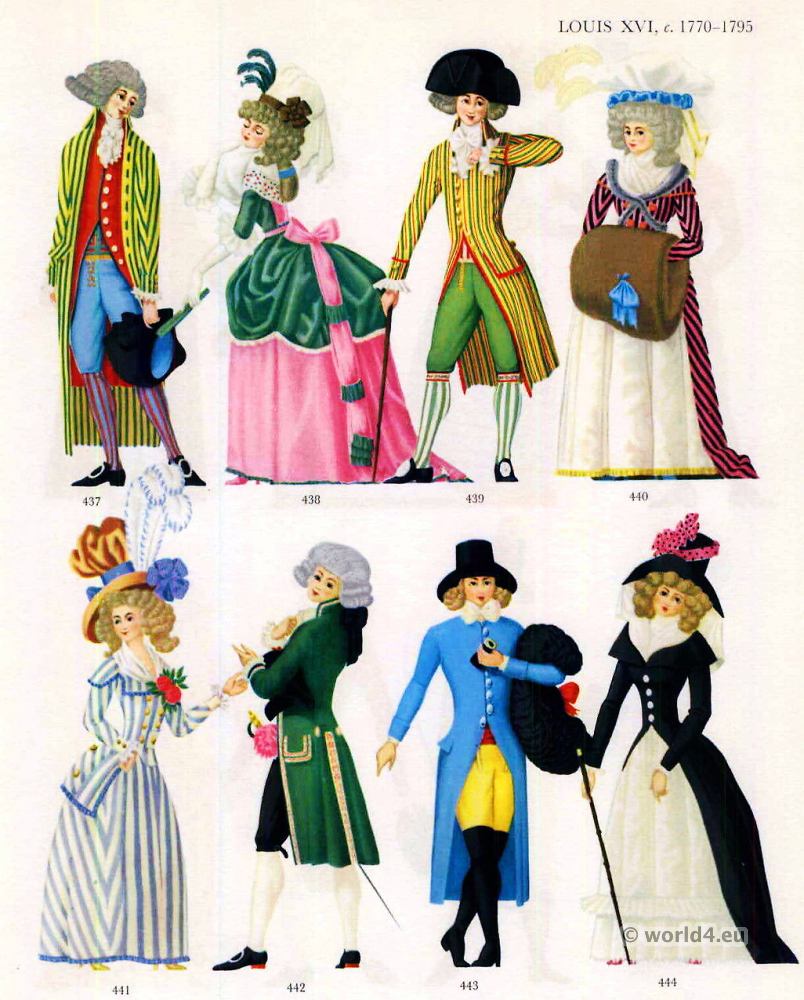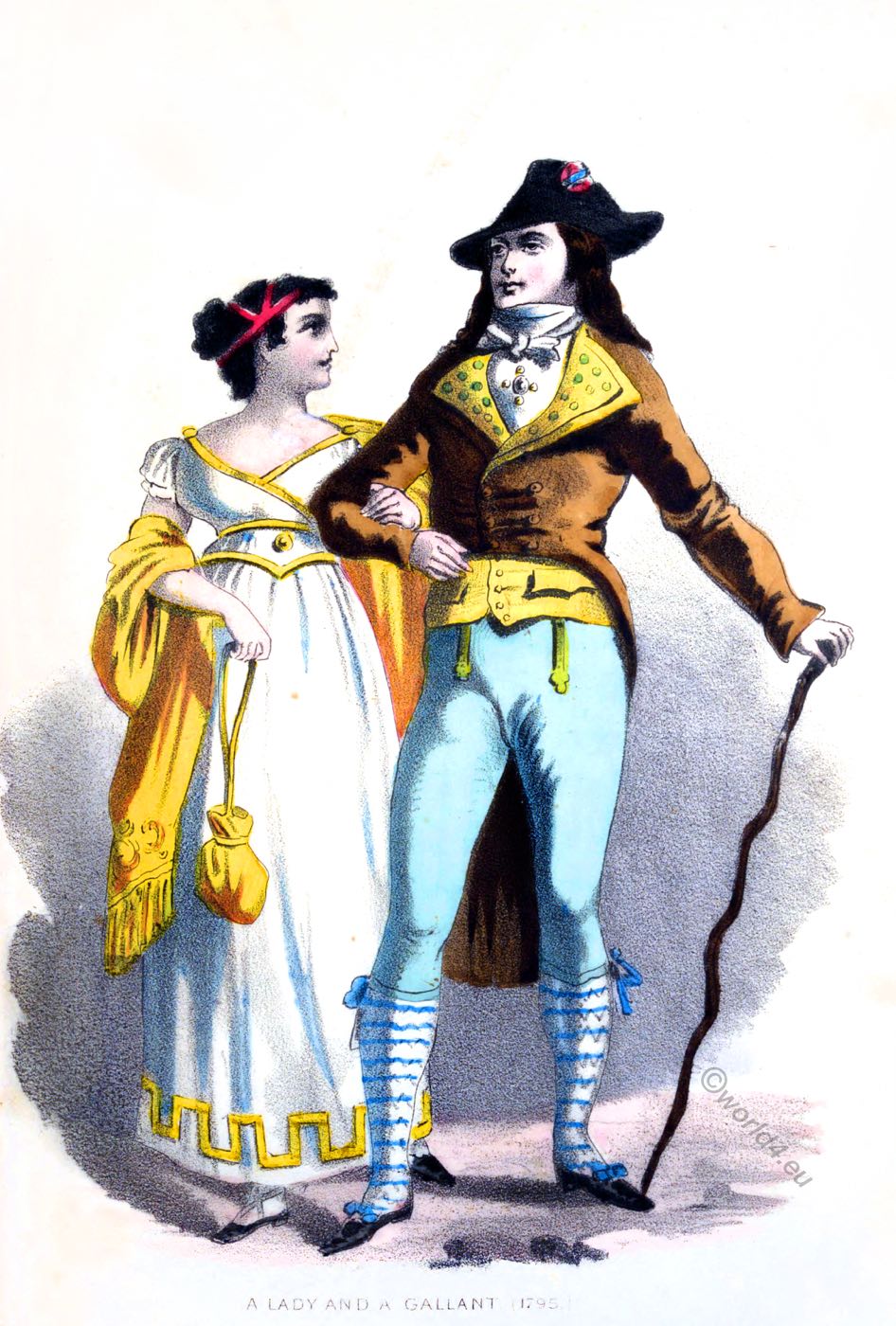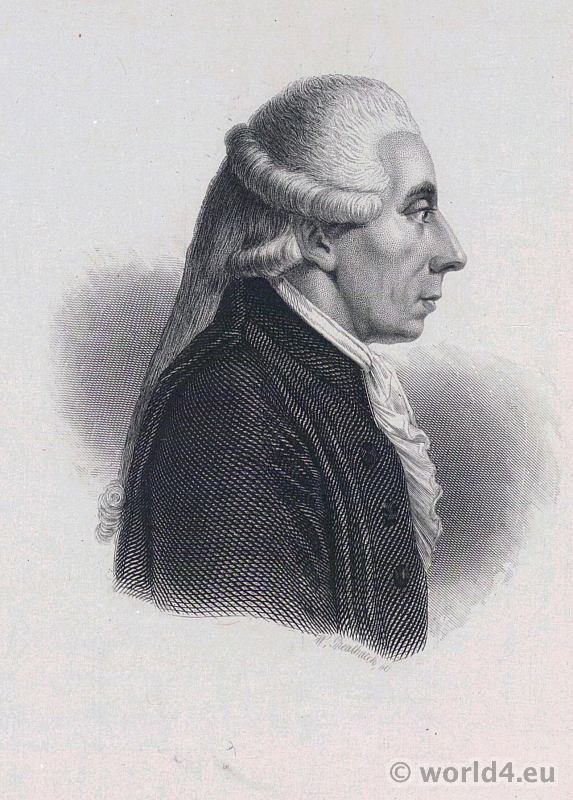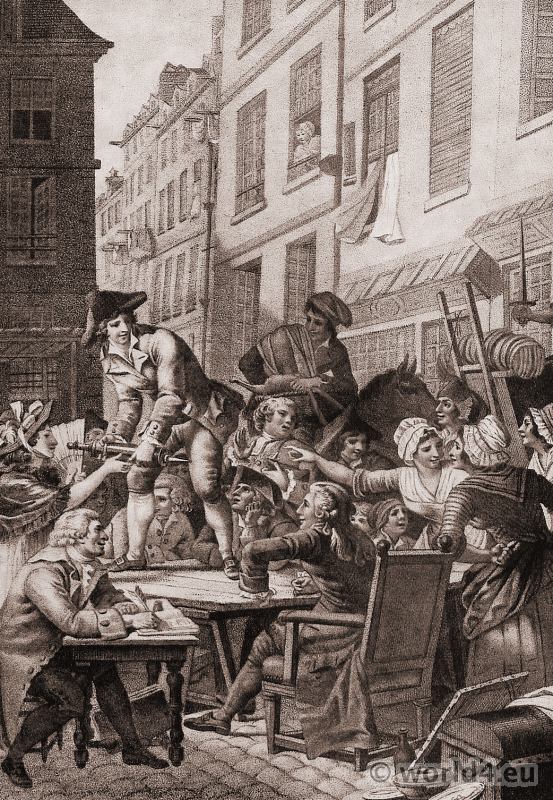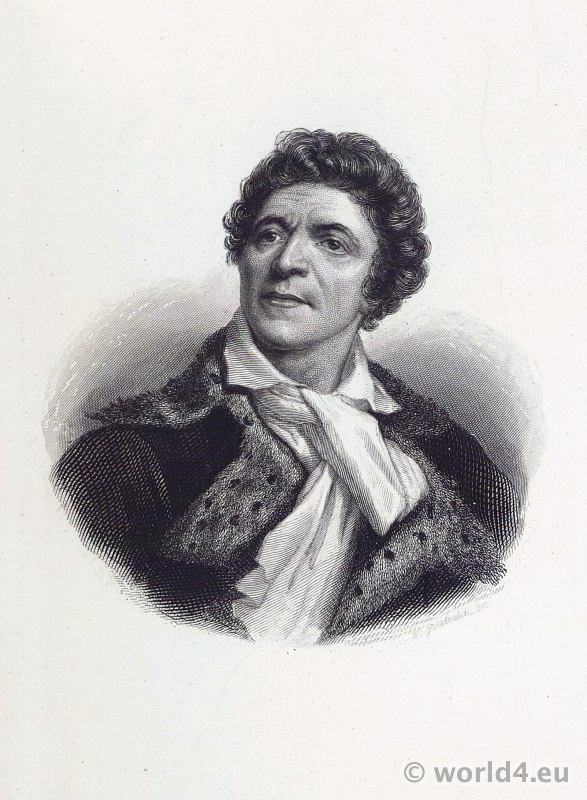The manifesto of the Revolutionary Tribunal – New social order of things in Paris – Metamorphosis of French feminine character – The reaction of the 9th Thermidor – the “Pit” at the Barriere du Trône – Paris rejoicing after its deliverance – Delirious times following the Deliverance – Jules de Goncourts graphic description – Dances everywhere after the 9th Thermidor – The different dances – The balls of Hôtel de Richelieu – Monsieur Mercier writing about the scenes at the different balls – the balls à la victim (The Victim’s Ball) – Monsieur Duvals “Souvenirs Thermidoriens,” –
Paris during the french revolution. Paris 1793 to 1795.
By Julius M. Price.
EVENTS were shaping themselves rapidly. The Revolution and the Reign of Terror had obliterated every thing,- Throne, Altar, traditions, morals, language, fashions, and customs. The uncompromising manifesto of the Revolutionary Tribunal, “La Liberté, la Fraternité ou LA MORT,” blazed forth in letters of gold on slabs of black marble from every carrefour to remind all of the cataclysm from which France had just emerged.
A social order of things of a character hitherto unknown in the civilised world came into existence, unbound by any rescripts of comity or ethics. The new interregnum brought about not only a complete subversion of everything hitherto existing, but also an absolute metamorphosis in the French feminine character. Surfeited by horrors, she emerged from the upheaval with her ideas so completely changed that one no longer recognized in the new creature the painted and powdered beings of the old régime. The reaction of the 9th Thermidor, *) followed by the execution of Robespierre, released pent-up feelings, long restrained by constant terror of Robespierre, released pent-up feelings, long restrained by constant terror.
Vendémiare – September 22.
Brumaire – October 22.
Frimaire – November 21.
Nivôse – December 21.
Pluviôse – January 20.
Ventôse – February 19.
Germinal – March 21.
Floréal – April 20.
Prairial – May 20.
Messidor – June 19.
Thermidor – July 19.
Fructidor – August 18.
*) July 27, 1794. According to the Republican Calendar, which was established by the National Convention of November 24, 1793, the old system was abolished for civil purposes. It was considered to have finished on September 21, 1792, with the Monarchy. A new era was inaugurated which commenced with the establishment of the Republic on the autumnal equinox (September 22), 1792. It was divided into twelve months of thirty days each, plus five complementary days which were to be devoted to the celebration of Republican fêtes. The months received the following names, and started on the dates mentioned below:
The motives for the establishment of this new regime were not only to correct the faults of the Gregorian Calendar, but still further to mark the new epoch into which France was entering, and to create a calendar of a purely national character, which, whilst not reflecting the ideas of any particular religion, would be suitable for all. This Republican Calendar did not, however, prove as satisfactory from the practical point of view as was anticipated, so it was officially suppressed after January 1, 1806. It had lasted twelve years, two months, and twenty-seven days.
Monsieur Georges Duval, who was an actual eye-witness of all he describes, in his “Souvenirs de la Réaction Thermidorienne,” tells us that the reaction immediately after that fateful day of deliverance was sudden, impetuous, terrible. Scarcely had the scaffold been pulled down down — the “Pit” * at the Barrière du Trône still displayed to the terrified passers-by its yawning gulf, from the bottom of which putrid miasma continued to exhale into the air and infect the neighborhood; the ground around had not as yet completely absorbed all the human blood with which it had been drenched for over two months,- than already balls were organised, and Paris gave herself over to rejoicing and festivity. Every one seemed feverishly anxious to make up for lost time by indulging in pleasures of all sorts.
*The executions during the last two months of the Terror took place at the Barrière du Trône. Immediately under the centre of the scaffold on which stood the guillotine, a large pit had been dug, and into this was drained the blood from the seventy or eighty daily victims. After the scaffold had been demolished, the pit remained open to the public gaze for some days before it was filled in.
Those delirious times immediately following upon the fateful day of the Deliverance have been most graphically described by Edmond and Jules de Goncourt in their “Histoire de la Société Française pendant le Directoire.” What can be more impressive than the following word-picture: “Night falls, listen, all the city is full of noise, and, wearying the very echoes, an orchestra composed of innumerable orchestras proclaims the awakening and the sleeping of the city on both the right and left banks of its river. On all sides the violins sing, and from the most obscure cul-de-sac one hears the strident notes of shrill fiddles. The musicians pant for breath, and at every corner and every crossing the bands resound and mingle without harmonising in the uproar of their rivals. France is dancing.
“She dances since Thermidor, she dances as she sung before: she dances to revenge herself, she dances to forget: between her bloody past and her dark future she dances. Scarcely saved from the guillotine, so as to believe it no longer, and the leg outstretching, the ear to the tune, the hand on the shoulder of the first comer, France still bleeding, and quite ruined, hops and trips and capers about, in an immense and maddening saraband.
“It is the god Vestris that has succeeded the god Marat. ‘Everywhere with your violins, dancing-masters! Light up blazing chandeliers, suns of the night! Contractors for orchestras, Helman of the Rue Gaillon, prepare always to have at hand cohorts of harmony, troops of indefatigable musicians full of energy till four in the morning!’In the nocturnal hours, the knockers resound on doors: ‘Violin players wake up, here are six écus of six livres, and a bottle of wine for your night.’ Happy is he who can play the fiddle, he lives by ruining the nouveau riche.
“The multitude rushes to the balls. It lives for the present, shaking off memory, abandoning hope: it intoxicates itself with noise, lights, shimmering gauze, hot odours, exposed bosoms, suggestions of legs, glances, nakedness, and the voluptuousness of the senses. Terpsichore suffices to console them in their grief, all these Frenchmen, all these young Armagnacs, drenched with the blood of the scaffolds where their fathers perished.
“One dances in thin shoes; one dances in rough sabots; one dances to the snuffling of the bag-pipes; one dances to the suave notes of the flute; one dances ‘en scandant la bourrée’; one dances jumping about in the English fashion. And the rich and the poor, the workman and the master, good company and bad company, all do the best their legs will let them in this Bacchanalian epidemic which runs riot through six hundred and forty-four public balls.”
The different dances. The balls à la victim (The Victim’s Ball)
To attempt to give even a short description of all the dances would occupy far too much space, but there were a few which must be mentioned, if only in order to give some faint idea of the general frenzy of rejoicing of the inhabitants of Paris after their delivery from the Reign of Terror.
They were dancing everywhere from the highest to the lowest, in every house or open space where a ball could be started. They danced in the old Cemetery of Saint-Sulpice on the very gravestones, for there had been no time to remove them. They danced in tears, they danced in mourning; cheap dances, middle-class dances, aristocratic dances, dances from four sous a tune up to five francs by subscription only. For it was not confined only to the populace. The wealthy classes, or rather what was left of them in Paris at the time, also took part in them, and the scenes as described by actual eye-witnesses read like veritable descriptions of the infernal regions.
Bals des victimes.
THE Ninth of Thermidor (when Legendre Tallien, Barras, and others terminated the life of Robespierre and the lives of the majority of his party) was followed by the reaction of popular feeling. The horrid cries and threats of the relations of the murdered during the Reign of Terror now seemed to threaten an immediate and piecemeal death to the surviving murderers. But how did this raging volcano of passion at last find vent? Why “mirabile dietu, in a Ball!” a ball that was intended to be the El Dorado of fashion and ton, and from which all their opponents were to be excluded.
None were to be admitted who could not prove the loss of a father, mother, brother, sister, husband, or wife, during the Reign of Terror, or that they themselves had been imprisoned or proscribed. This ball was held during the winter of 1794, on the first floor of the Hotel de Richelieu, and received the singular but appropriate name of the Bal of Victims. The dancers were compelled to attend it in the deepest mourning; the hangings were entirely black, and black crape was attached to the fiddles, chandeliers and furniture. The Terrorists, however, were determined not to yield without a desperate struggle; so they instituted a rival ball, called The Ball or Executioners which was held in the second floor of the Hotel de Richelieu, and to which no member was admitted that could not prove himself guilty of some glaring revolutionary crime. The dancers were or to attend in the brightest red, the hangings were entirely red, and red cloth and silk were attached to the fiddles, chandeliers, and furniture.

Perhaps it may be imagined that when the members of the opposite ball encountered blood flowed. Quite the contrary; their bows were low and formal, and their compliments were paid in the loftiest of revolutionary fraternity. At the Ball of Victims a ludicrous incident occurred.- During the Reign of Terror, if the person intended for destruction was not to be found, some prisoner, whose name was similar in sound, or who was connected with or related to him, supplied his place, and then the name of the proscribed was erased from the fatal list, and his death published.
This was the case with two ladies of the name of De – Both had evaded their persecutors, but the names of both were on the list of the guillotined, and each, therefore, considered herself the only one saved; their screams of horror and astonishment when they met at this ball, alarmed even the gay and callous dancers; convinced, however, that neither was a ghost, they embraced, and each congratulated the other on her happy preservation.
While they were thus locked in each other’s arms the master of the ceremonies approached them. (The death of the other was the title on which each had received her ticket of admission) Then he addressing the elder sister, asked her whether she could name any other relation who had perished during the Reign of Terror? The lady hesitated for a moment, and then answered that she did not think she could. The same question being put to the other sister, she also replied in the negative. “Then, Mesdames,” said their interrogator, “I have the sorrow to inform you that you are no longer members of this ball.” The two ladies stared in silent astonishment and chagrin. “It is delightful to have found a sister,” at last cried the elder, taking the younger by the arm, “but it is melancholy to have lost one’s free admission!” Reynolds’s Memoirs.
The balls of Hôtel de Richelieu.
There were balls at the house of Richelieu, where they finished up with a cold supper, and where they danced under the magnificent panelled ceilings which were dishonored on Sundays by the smoke of pipes and the aroma of hot grog, on those ancient parquet floors which were ruined by greasy boots, and on which the prostitutes of the Palais Royal tumbled and reeled.
But where the best people danced, where the beautiful Madame Hamelin would most frequently exhibit her Creole charms in unblushing semi-nudity, was at the Hôtel Longueville. There, in those majestic salons, as vast in extent as a gallery in the Louvre, thirty sets of quadrilles could be danced at a time to the orchestra conducted by Hallin. Three hundred perfumed and ethereal women, in indecent “Venus deshabille,” “showing all they ought not to show,” as the de Goncorts put it quaintly, “dainty legs, roguish feet, elegant bodices, wandering hands, bosoms d’Armide, and forms of Callipyge,” in the arms of vigorous dancers, twisting and whirling again and again, each clasped tightly to her Adonis, and giving themselves up unrestrainedly to all the delights and abandon of the hour.
“Who would have thought,” says Monsieur Sébastien Mercier, in “Paris pendant la Révolution,” “on looking round these Salons resplendent with light, at these women with naked feet, with all their toes covered with diamonds, that one had only just been delivered from the Reign of Terror; that so many thousands of people had perished, leaving no traces even of their existence?” If any regrets were expressed at the disappearance of the old régime, they had at length become so conventional, and the aristocracy had fallen so low, that one no longer even troubled to carry those fans cleverly embroidered with fleurs-de-lis, nor those mysterious bonbonnières in which were hidden the prescribed colors of Royalty, whilst the infamous “bal de victimes” was after a short time only spoken of as a bizarre kind of amusement.
No account of the almost inconceivable state of social life in Paris immediately after the fall of Robespierre would be complete without a slight description of these “bals à la victime” which had been started by the survivors of the aristocracy almost immediately after the day of the Deliverance. Here again I cannot do better than give Mercier’s own words.
“Will it be believed by posterity,” he asks, “that people whose parents had perished on the scaffold, instead of appointing days for public and solemn affliction, where, assembled together in dress of mourning, they would have shown their grief for losses so cruel and recent, actually fixed days for dancing and other festivities, waltzing, eating, and drinking in all jollity. To be admitted to the banquet or to dance, it was necessary to produce a certificate to prove that one had lost a father or mother, a wife or brother or sister under the knife of the guillotine. The death of mere relatives did not confer the right to be present on these festive occasions. Could it have been Holbein’s Dance of Death that inspired such a hideous idea? Why did they not in the midst of the noise of violins make a headless spectre join in the dance? Vain efforts of the Aristocrats to form new conventions! But all that bears the stamp of fanaticism or wanton ceremony is doomed to disappear rapidly.”
There were apparently several other gruesome conditions attaching to admission to these infamous entertainments. Duval, in his “Souvenirs Thermidoriens,” describes at considerable length how male dancers had to salute on entering, by a movement of the head, imitating that of a victim as he was placed under the guillotine, whilst the fair esex wore thin red ribbon tied round their necks to recall the scission made by the knife.
It is, however, curious to note that the several authors of the period who have described the bal are at variance upon its locale. The de Goncourts mention that it took place in the Faubourg Saint-Germain, the Duchesse d’Abrantés states that it was held in the Hôtel Richelieu in the Rue Louis le Grand, and afterwards at the Hôtel de Thelusson, Rue de Provence, whilst we have both Mercier and Duval protecting themselves by not mentioning at all where to their knowledge this gruesome exhibition of depravity took place. The substratum, however, of all their statements seems to be practically the same, with the exception perhaps of Her Grace of Abrantés, who naturally gives a feminine and therefore lighter touch to her description. In any case it must be admitted that the narratives of the chroniclers of these times cast a lurid and unsatisfactory light on the morale and character of the French aristocrat of the period.
One must, however, take into consideration to a certain extent the exceptional conditions under which these young and unfortunate persons found themselves; their sudden transition from poverty to affluence, from extremes of human tension to momentary relief. When one contemplates all this, one is perhaps more moved to pity than indignation at these repellent proceedings.
Let us see in our next chapter how feminine fashion was governed and regulated by the stirring events of this epoch.
Source: Dame Fashion. Paris-London (1786-1912) by Julius M. Price. New York, Charles Scribner’s Sons, 1913.
Julius Mendes Price.
Julius Mendes Price (London, 1857-London, 29 September 1924) was an explorer, painter, poster designer, caricaturist for Vanity Fair and British journalist. He studied at University College London and then in Brussels. After the Beaux-Arts de Paris, he participated in an expedition to Bechuanaland (Republic of Botswana) in 1884-1885 as a correspondent for the Illustrated London News.
He then accompanied Nils Otto Gustaf Nordenskiöld on his journey in search of the North-East Passage (1890-1891) and continued the journey alone through Siberia, Mongolia and the Gobi Desert to Beijing in 1890. After exploring Western Australia (1895), he worked as a journalist during the Greek-Turkish War of 1897. In 1898, he left to observe the gold rush in the Klondike.
He was a war correspondent for the Daily Telegraph with the Russian army during the Russian-Japanese conflict (1904) and also served as a war correspondent at the beginning of the First World War on the French front and then, from 1915 to 1917, on the Italian front. During the capture of Gorizia (Sixth Battle of the Isonzo), he was the only journalist on the spot.
In addition to numerous drawings, caricatures and illustrations, he was also responsible for canvases. In 1900, he won a medal at the Paris Exhibition and appeared in Les Maîtres de l’affiche.
Related
Discover more from World4 Costume Culture History
Subscribe to get the latest posts sent to your email.

